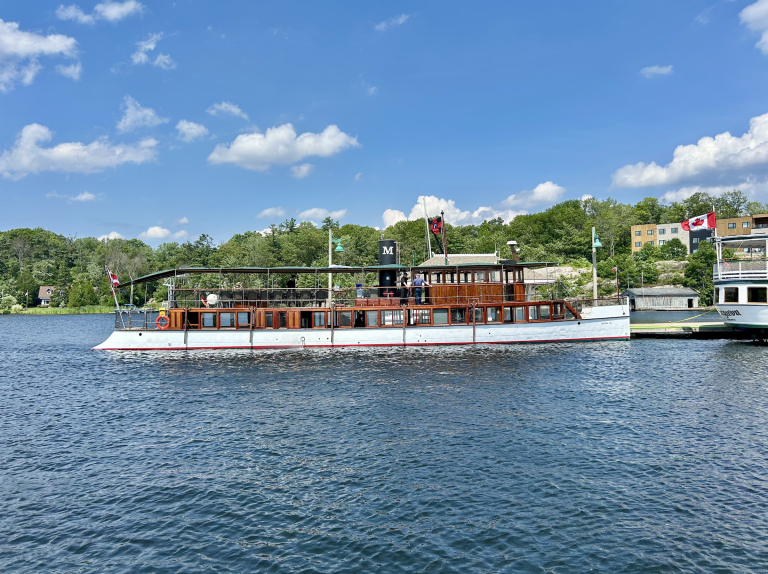Choosing a suitable boat hull can be a game-changer for your boating experience. All hulls either ride atop the water or displace it, but there’s a lot more to consider beyond that simple distinction.
Different boat hull shapes offer varying advantages, so picking the right one tailored to your needs is crucial.
You may wonder which hull shape best suits your boating activities. Whether you’re tackling waves on a large ship or cruising inland waters, understanding boat hulls can make a significant difference.
Various hull types cater to different environments, making it easier to find one that ensures a smooth and enjoyable ride.
Boat Hull Shapes Key Takeaways
- Different hull types influence how boats perform and handle.
- Choosing the right hull ensures the best boating experience.
- Boat docks can simplify docking procedures.
Most Common Types of Hulls

Rounded Hulls
Rounded hulls fall into the displacement hull category, designed to move smoothly through water. Canoes and most sailboats feature this type of hull.
These hulls roll with the waves and create minimal resistance, providing a smooth ride even in rough water. However, they can be quite unstable and prone to rolling over, so they’re not the best choice if you seek high stability.
Flat-Bottom Hulls
Flat-bottom hulls are an example of planing hulls made to glide on water surfaces. Boats with this type of hull require only a small engine to start planing and are known for their stability on calm waters.
However, they are not well-suited for rough or choppy conditions, making them more appropriate for ponds, lakes, and shallow rivers. These boats can provide a very smooth ride in tranquil waters but get quite bumpy in turbulent conditions.
Multihulls
Multihulls include boats with two or more distinct hulls. Depending on the shape and engine size, these can be displacement or planing hull types. Examples include catamarans and trimarans.
Known for their wide beams, multihulls offer excellent stability and faster speeds than monohull designs. They usually handle rough water well but have a larger turning radius. The wide design also maximizes deck space, which can be a huge benefit.
V-Bottom Hulls
V-bottom hulls (or V-shaped hulls) are common among speedboats and are part of the planing hull category. These hulls allow for smooth, high-speed rides and perform excellently in rough or choppy waters. However, they require larger engines and are generally less fuel-efficient.
There are also variations to address some of the V-bottom hull’s issues:
Modified-V Hulls: These balance the deep V-shaped design with a flatter stern section for added stability without sacrificing too much speed.
Stepped Hulls: Featuring indentations or steps that reduce water contact as speed increases, these hulls minimize drag for even faster performance.
Pontoon Boats
Pontoon boats ride on long, buoyant tubes usually made of aluminum. Often considered a type of multihull, these planing boat hulls offer substantial deck space and are highly stable.
They operate best at low speeds in calm waters and, like other multihulls, have a large turning radius. Although pontoons maximize space and provide stability, they’re not designed for high-speed or rough-water scenarios.
Selecting the Optimal Hull Shape

Choosing the right hull shape is crucial for your boating experience. Each hull type offers distinct benefits and fits specific needs. Here’s a quick guide:
V-Shaped Hulls: These are ideal for rough waters and offer excellent stability and speed. They are common on powerboats and water sports boats. They handle sharp turns well, making them perfect for adventurous trips or high-speed cruising.
Flat-Bottom Hulls: Flat-bottom boats are best for calm waters. They provide greater stability at lower speeds and are more fuel-efficient. Flat-bottom boats are often used for fishing boats and recreational sailboats.
Displacement Hulls: These sit deeper in the water and are built for heavy loads. They’re less likely to capsize and are perfect for larger boats like yachts and some fishing vessels. A good choice if you prioritize weight and stability over speed.
EZ Dock Boat Docks Can Make Docking Any Watercraft Easy
EZ BoatPorts can simplify docking for any boat, whether used for leisure or commercial purposes. These floating docks are robust, non-slip, and modular, requiring minimal upkeep.
Plus, the Optimus BoatPort is tailored to fit various boat types and can easily adapt to stepped hull boats with the optional Stepped Hull EZ Slide.
Frequently Asked Questions
How is a Planing Hull Different from a Displacement Hull?
Planing Hull: A planing hull glides on top of the water at high speeds. It relies on speed to lift the boat out of the water, reducing drag
Displacement Hull: A displacement hull, on the other hand, pushes through the water. This type is designed to move more slowly but can carry heavy loads and offers better stability in rough conditions.
When is a Flat Bottom Hull the Best Option for a Boat?
A flat bottom hull is ideal for small boats used in calm and shallow waters. This design provides excellent stability on still waters and is perfect for fishing or leisure activities where the boat remains mostly stationary.
How Does Hull Shape Impact a Boat’s Stability?
The stability of a boat is heavily influenced by its hull shape. Here are a few key points:
- Flat Bottom Hulls: These offer great initial stability on calm waters but can be bumpy in choppy seas.
- V-Shaped Hulls: These provide a smoother ride in rough water due to their ability to cut through waves.
- Round Bottom Hulls: These are less stable than flat or V-shaped hulls but offer a gentler motion, making them suitable for certain types of boats like sailboats and canoes.
What are the Three Main Hull Designs You Commonly See on Boats?
Here are the three primary hull designs:
- Displacement Hulls: Found on sailboats, large yachts, and trawlers; known for better handling in rough waters.
- Planing Hulls: Commonly used on speedboats and smaller recreational boats; these hulls ride on top of the water surface at high speeds.
- Catamarans/Multihulls: These have two or more hulls, offering excellent stability and space, ideal for calmer seas.
Which Hull Type is Most Suitable for Rough Waters?
Displacement hulls are considered the most appropriate for rough waters. They can handle choppy conditions well, providing a smoother and more stable ride compared to flat-bottomed hulls.
What Should You Consider When Choosing a Hull Design for Seaworthiness and Efficiency?
Several factors should be taken into account:
- Boat Usage: Consider whether you need the boat for speed, stability, or carrying heavy loads.
- Water Conditions: For calm waters, a flat bottom hull is sufficient. Meanwhile, for rougher seas, a displacement hull is preferable.
- Speed Requirements: Planing hulls are better for high-speed activities.
- Load Capacity: Displacement hulls handle heavier loads better.







